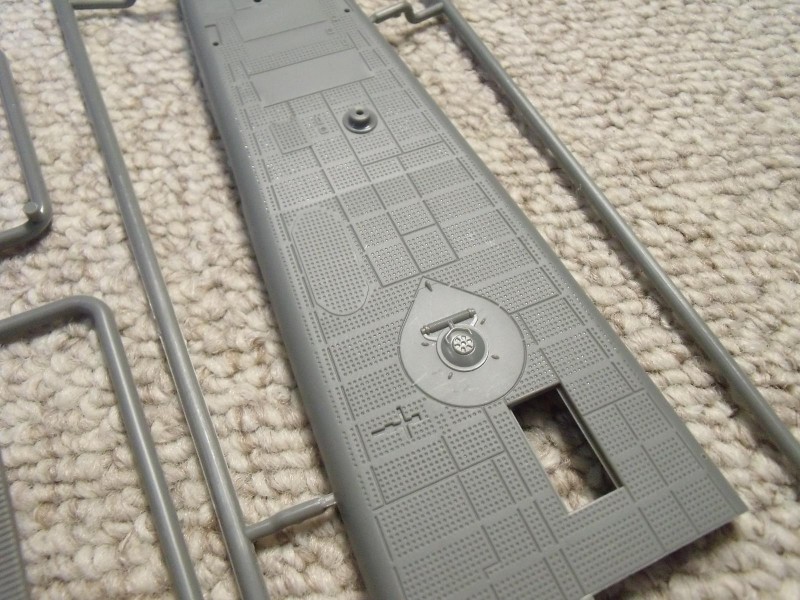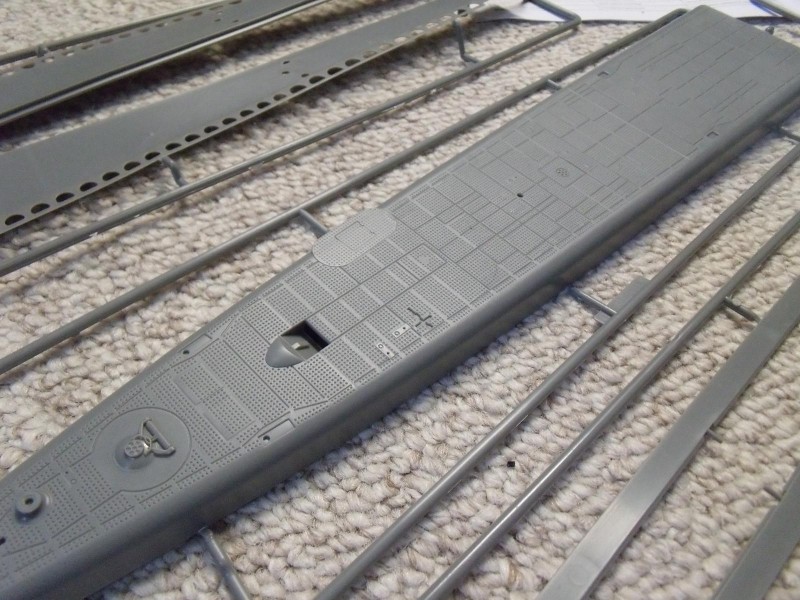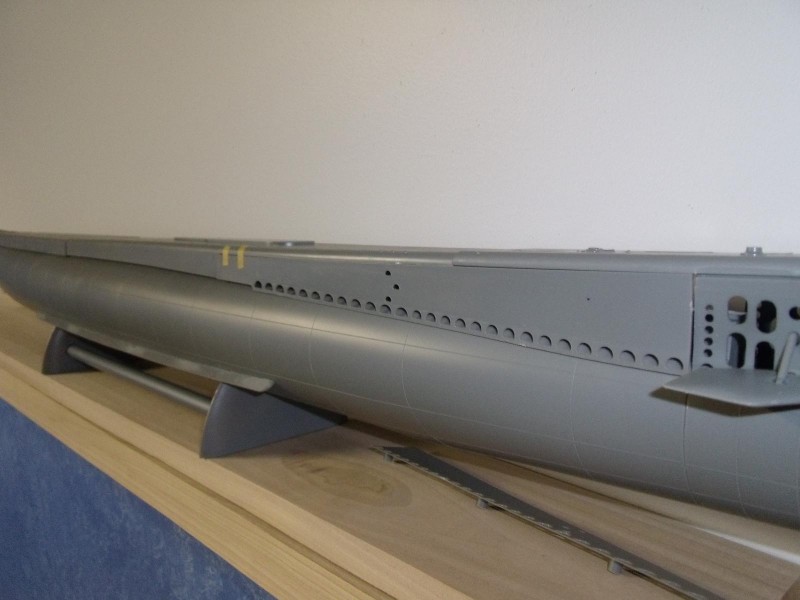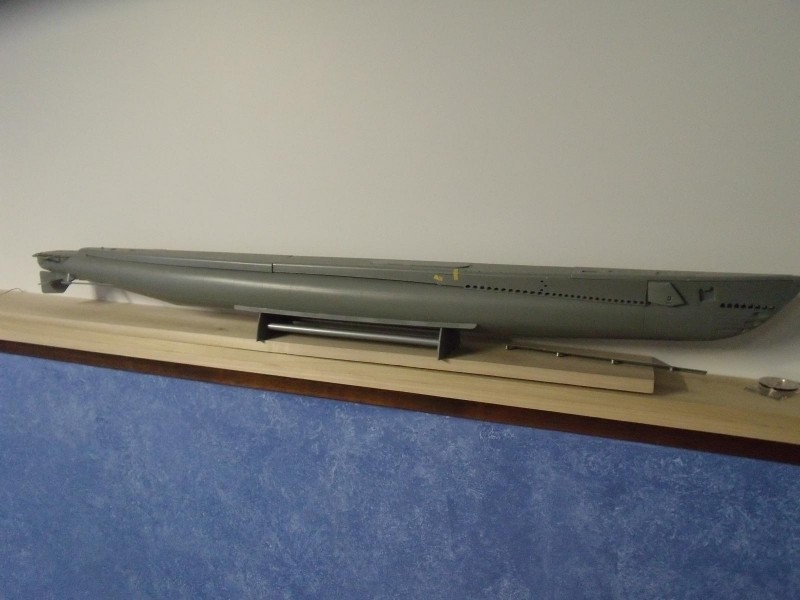When one thinks of 1/72 scale, be it for armor or aircraft, a diminutive form is usually brought to mind. Sometimes they are no less detailed then a larger scale, but often times are lauded for taking up less shelf space then their more expensive brethren. This is all true because 1/72 is usually on the smaller end of the scale for smaller subjects..
However, for militray/naval vessels... they don't usually come in any "larger" scale than 1/72.. for a reason... Case and point, Revell's 1/72 U-boat/Submarine lines. Let's let the box do the talking:
This thing is massive. Though Gato-class subs were large "fleet" sub's when conceived, their size was hardly comparable to dated destroyers of that same period, and for obvious reasons, their tonnage was quite low. I'll spare the history lesson for now and get this build kicked off.
This Revell kit has been around for about 14 years now, and its praises and woes have been well documented out on the inter-webz. I know ships/boats are less popular [around here], but I couldn't help but snapping and sharing a few pics as I tore into this kit today.
The kit itself is well packaged, and for such a simple subject matter it offers a fairly large 273 part count. The main hull is split into two large pieces vertically. There is no pressure hull to build, which would needless over-complicate the kit with un-needed construction. Instead there are two support ribs. To locate the two halves, a number of small slip-fit pins are provided, which allowed for just enough slop to ensure that seems are aligned as the glue begins to set. The fit was not perfect, given that there was some bowing lengthwise, but with enough clamping, tape, quick-set cement, and time, all set up with no discernible issues.
Once the pieces set, I then added the bilge keels, and found a place to temporarily shelve the assembly.
Bow and stern are [like the hull] each split into two vertical pieces. The bow assembly has a small insert that fits between these halves to add some "interior" detail to the vents just aft of the breakwater. I painted this black prior to install, since it will be visible enough to see, but hard to paint later. After fitting these and letting set, the front diving planes were fit and assembled. Like the real thing, they extend and retract, as well as change dive angle.
At the stern, there is an insert for the torpedo tube doors, which was painted black prior to install. Unlike the front dive planes, the kit has you assemble the rear planes and rudder in a fixed position. Fortunately, but plan or by luck, they made it enough enough to snip away some material, so that they can be articulated. If you choose to make this modification, just ensure that the fit of the plane's axle is not too loose, else it may flop around (axle is not center of mass).
The deck is made into three pieces, and detail is pretty good. My only complaint is that I wish they would have provided surface detail to the side portions, such as riveting or panel detail (like what Eduard's detail set has). I may yet add rivets, if I can find a good enough detail shot of the real deal by scouring Navsource.
-

-

Speaking of scouring Navsource... My initial plan for this build was to build USS Wahoo. In taking to doing research, I was reminded by 2 facts... First, good reference photos of silent service boats are
sparse. Second, no two boats were alike, it seems. With subsequent re-fits and modifications at various stages of the war, these boats rarely looked alike, if you start to scrutinize bridge structure, and gun placement, quantity, variety, etc.. The most unfortunate thing I found when research first on the Wahoo, was that Revell opted to use Electric Boat's limber vents, seen in the shot below. Perhaps this was because this pattern was the most sparse, or because this leaves the best canvas for cutting holes to what ever boat you want to do. Nautilus Models makes templates for cutting these, but I'm not sure I want to go down that road. Also, the kit doesn't provide the correct AA guns to do the Wahoo, the propeller guards aren't correct, and lastly the rear of the superstructure on the Wahoo was tapered-off, rather than rounded like the kit provides. All-in-all, the modification can be done, but i'm not ready to signup for that amount of work.
-

-

With all the noted differences, I was left wondering, if I built the kit out-of-the-box, what could it represent? This is when I began thinking that Revell probably based their kit on a surviving Gato. Sure enough, 95% of the details on this kit match the USS Cobia in Wisconsin, as she sits today. Because patrol boats didn't carry their hull number, I will not have to truly decide, but instead, I'm just going to build. I will continue to research as I build, and build to suit when able, however, it is mainly superstructure detail and gun placement that will make all the difference.
Speaking of which, the superstructure is ready for "interior" paint, and coming together nicely. Pics for now... This build has progressed rather quickly thus far, hopefully I can keep pace in the days/weeks to come.
Much cleaning/filing/filling/sanding to do yet, but as she sits... this kit is massive! Now that the massive parts are clipped and glued, I can stop using my carpet as a workbench! (...now what to do about a paint booth...)
9 additional images. Click to enlarge.